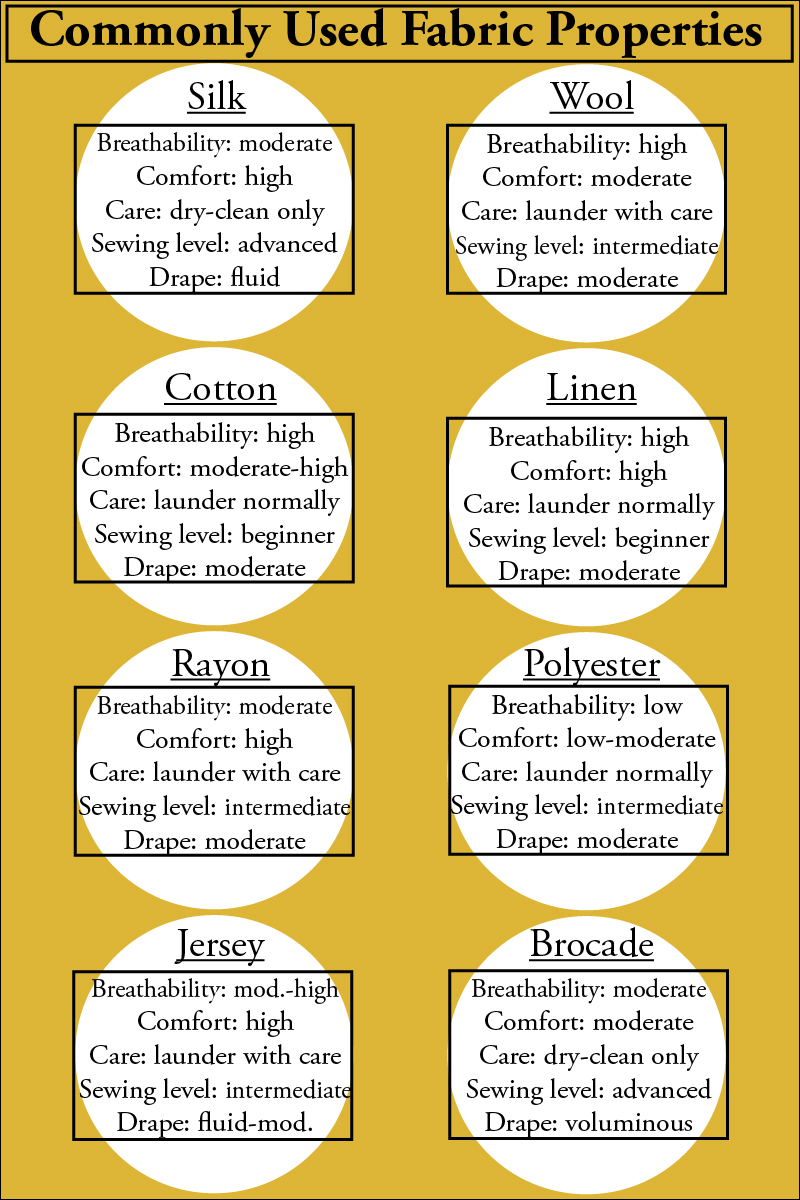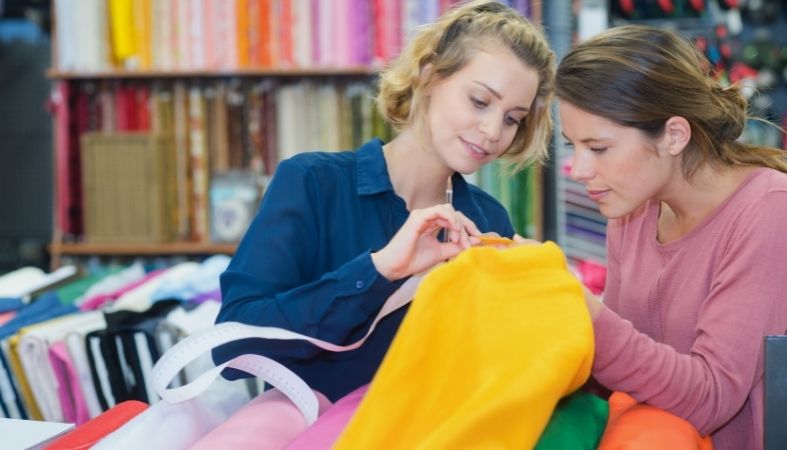Some Known Incorrect Statements About All 4 Way Stretch Fabrics
Some Known Incorrect Statements About All 4 Way Stretch Fabrics
Blog Article
The Ultimate Guide To All 4 Way Stretch Fabrics
Table of ContentsWhat Does All 4 Way Stretch Fabrics Mean?The Buzz on All 4 Way Stretch FabricsSee This Report on All 4 Way Stretch FabricsSome Known Questions About All 4 Way Stretch Fabrics.All about All 4 Way Stretch FabricsThe Buzz on All 4 Way Stretch FabricsThe Ultimate Guide To All 4 Way Stretch Fabrics
As I likewise want UV security from my garments when I go out, I would certainly select a largely woven cotton textile. One even more factor to consider when getting the textile is the way it will certainly after washing.A winner would be to buy at least 10% additional material. If you can get preshrunk textile, this is the ideal. Preshrunk textile will have labels that will say" etc. If you are looking for a fabric that will certainly not stretch or lose form, you can look for the "anti-sag" tag.

If you are matching the shade, like choosing the lining for the primary fabric or picking textile to include as trim, this is specifically crucial. The material display rooms will generally have a light well where you can see the material in sunshine (or a window with excellent light from outside).
About All 4 Way Stretch Fabrics

Many materials are about 44 wide. When you go to purchase textile, estimate exactly how much you want first and after that go to the store.
Some fantastic bargains can be had this way. In dressmaking, we acquire textile by the yard/meter.
The Main Principles Of All 4 Way Stretch Fabrics
In a quarter of a backyard, you obtain a 9 by 44 strip of fabric, which is concerning 22 centimeters in size. According to the size of fabrics, they might be called single-width and double-width.
Choose fabrics that are not also hard or stiff, or you would not be comfy in them. Bed linen, Jeans, flannel, For cooler environments, choose wool (100% as well as woollen blends) woollen tweeds, woollen crepe; it basically depends on what pants you are talking concerning Tailored pants, Unstructured Pant, Combined, Denim.
Corduroy is comfy to wear material to choose for pants. All cotton fabrics benefit youngsters. You can choose a cotton satin stretch or a cotton twill or cotton satin or yard. Knit materials are likewise wonderful for children you can go for woollen knits. Interlock knits are dressmaking knits that extend throughout the grain.
Getting My All 4 Way Stretch Fabrics To Work
Take a look at this post on the most effective fabric for clothing for infants and youngsters for more information on this subject. Lightweight cotton is my preferred to sew skirts. Cotton grass towel in pretty prints is excellent. Silk jacket is a wonderful textile for stitching skirts, as is Ponte Roma weaved material.
Additionally, drapey rayons, soft woollen, lycra blends, and stretch velvets are all suitable for sewing skirts. Woollen (Woollen crepe has a great drape and offers adequate framework for coats; woollen tweeds are fantastic too), Linen & Flannel. Velvet (Take A Look At the slouchy velour sports jacket tutorial, incidentally). Lightweight knits benefit free-flowing coats similar to this waterfall jacket pattern Raw silk, satin, taffeta, velvet, Shoelace, silk chiffon, and Fabric are all fantastic for making gowns.
You can get medium-weight textiles with some spandex/elastane included for a fitting bodycon-type gown. For drapey gowns, you can choose light-weight textiles. Crepe, challis, and charmeuse are all drapey fabrics fit for More Info this style.
Light-weight cotton material, Cambric, Chintz, Twill, Faille, Seersucker, Poplin, lightweight woven broadcloth, batiste, bed linen, eyelet benefit making t shirts and shirts. I enjoy chiffon shirts. Smooth satin textile benefits making airy tops. Have a look at the message on the 7 finest materials for making tee shirts. Making serapes and headscarfs require various factors to consider for the material check out this blog post on the materials for making headscarfs When buying formed material (the majority of the patterned fabric comes with a size of 45 or 54 inches), there will be pattern repeat in these materials, and this need to be thought about when cutting material as well as purchasing them i.e., if you wish to match the patterns at the joints.
The Of All 4 Way Stretch Fabrics
The themes will be distributed in an organized fashion on the textile. You might see in some cases If the print is not positioned on the textile appropriately, it can not be matched or lined up when created without distorting the material and the hang of the garment.


You can discover more about grain and grainline of textile below. The material weight hinges on lots of variables like the weave, fiber type, and so on and is usually denoted by GSM. GSM can vary from 60 -700; 700 being the GSM of very high-grade woolen textile. A denim fabric has a GSM of 400, depending on the weave.
One thing you have to keep in mind is that higher material weight does not signify greater fabric quality. You can not choose high textile weight material jeans for a light-weight floating shawl.
In a nutshell, the most important criteria to look for in the fabric you buy are as adheres to (http://www.askmap.net/location/7035845/usa/all-4-way-stretch-fabrics). The number of strings per inch of material (yarns-per-inch).
See This Report about All 4 Way Stretch Fabrics
This is very essential in any textile. In top quality fabric, this equilibrium (either in numbers or in size) will certainly always be preserved. Processes utilized on fabric to enhance appearance and performance. The fibers that are woven to make the material will either be as a single hair or will certainly be developed by incorporating two yarns (twisted).
A two-ply yarn transcends to a single-ply yarn.
If you are obtaining prepared to begin a new embroidery project, choosing a fabric will certainly be one of the most important action once you choose what you intend to make. After you've gone to all the difficulty and expenditure of acquiring the sewing maker you love, a pattern you like, and a textile you like, you want the finished product to be a success? One way to accomplish that is to start by making sure your material is truly right for the task.
Getting My All 4 Way Stretch Fabrics To Work
For instance, if you're making a patchwork, you'll automatically wish to make use of quilter's weight cotton for finest results. What if you want to make an item of apparel? How do you understand which material will give you the most effective outcome? Selecting a fabric merely due to the fact that you like the print or design on it isn't necessarily the best technique.
You understand. So to avoid doing a whole job for virtually absolutely nothing, we have actually put together some ideas to aid you make a decision which material is best for your job. Allow's claim you currently have a task in mind; exactly how do you locate the right fabric for it? One method is to look at comparable things in storesor ones you already have.
Think of the attributes you desire the finished item to have. Do you desire a solid shade or a print? If you are making a non-wearable item such as a cushion cover or potholder, make use of a tough fabric such as canvas.
There is so much info available regarding materials, their qualities, and their uses, it might obtain to be frustrating! So don't attempt to take it in all at the same time; simply begin with the project available. Learn all you can regarding the textile you utilize for this one job.
Report this page